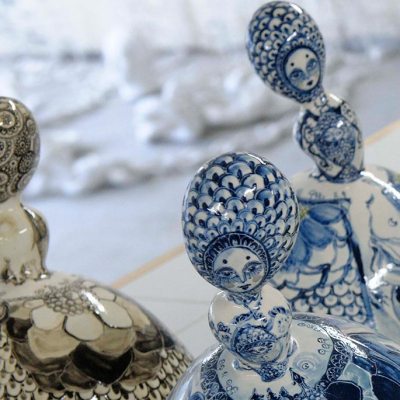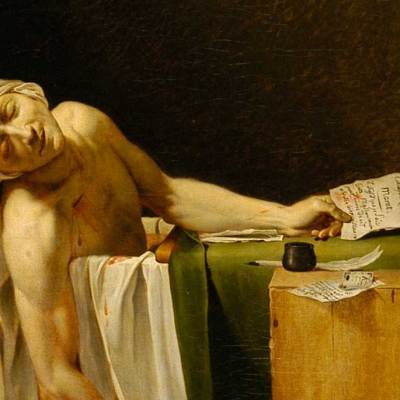I’ve often wondered if there can be said to be an Anglican aesthetic. If such a thing exists, then Stanley Spencer’s decorations at the Sandham Memorial Chapel (1927–32), which seemingly unite progress and tradition, are probably it.
‘Stanley Spencer: Heaven in a Hell of War’, at Somerset House (until 26 January 2014), includes 16 large-scale canvases and a digital projection of Spencer’s monumental Resurrection, evoking the chapel’s interior with relative fidelity.
Spencer pithily described his war memorial as ‘a symphony of rashers of bacon’. Having both fought on the frontlines at Salonika and worked as a hospital orderly in Bristol, Spencer’s recollections of the First World War walk a fine line between fraternity, tragedy and even whimsy. Insult and injury sit uncomfortably close to tea-making, laundry and a thousand other routine tasks that filled Spencer’s days between the intermittent periods of horror.
Detail from Stanley Spencer’s painted scheme at the Sandham Memorial Chapel (1927–32) Photo courtesy of Sam Roberts

This is art as catharsis. Clearly struggling to come to terms with the war, Spencer reveals a rather repressed fixation on work, cleaning and generally keeping distracted. As the curator, David Taylor, points out, for Spencer, ‘busyness was next to godliness’. While the likes of Roger Fry and Vanessa Bell may have been swanning around Bloomsbury cursing this ‘damn war’, Spencer would have us believe that he had his sleeves rolled up, ready to muck in.
The Sandham Chapel is more than just a reflection on war. Arguably it is also a coherent expression of Englishness. The Americans may have a dream and the Italians may have la dolce vita, but the English have cultivated an altogether more quaint and bizarre national identity. Spencer perpetuates the eccentric, stiff upper lip, plucky underdog, tea and crumpets swilling, keep calm and carry on, small island mentality. All that’s missing are a few cricket balls and a saucy vicar.
Indeed, Spencer’s stoic heroes call to mind Captain Robert Campbell, a POW who appealed directly to the Kaiser for permission to return back to Blighty in order to visit his dying mother. Incredibly, the Kaiser agreed on the condition that he come straight back. Even more incredibly, Roberts actually obliged, feeling duty bound to honour his word. It’s all just a little too English. This blinkered localism and stubborn insistence on tradition runs in stark contrast to the fact that in 1922, Britain ruled a quarter of the world’s surface.
Digital display of Stanley Spencer’s ‘The Resurrection’ at Somerset House Photo courtesy of Sam Roberts

Although I have little time for self-effacing stereotypes, I have a great deal of time for Spencer’s masterpiece. The Sandham Chapel is a fully realised visual statement. It is also intrinsically modern. Spencer may uphold the old clichés, but he subverts their presentation. He dragged Cézanne into the Home Counties, but did so via Giotto and Piero della Francesca. By combining elements of the Renaissance fresco with the village green, Spencer made modernism palatable to an English audience.
This stealthy sophistication shatters any false sense of security. Spencer’s typically mannered approach, as demonstrated by Map Reading, makes use of multiple viewpoints and distorted forms, engaging with the fractured nature of memory. The amorphous and dream-like atmosphere is occasionally punctuated with sudden clarity through naturalistic touches, such as the visceral still life of a sponge in Ablutions.
Likewise, the vast and dense Resurrection, which is far from quaint, constitutes an artistic and spiritual manifesto that recalls Michelangelo’s Last Judgment. Spencer expertly unites the sublime with the mundane, the surreal with the kitchen sink. It is one of the greatest religious paintings of the 20th century.
This exhibition will inevitably be received in the context of the coming centenary of the outbreak of the First World War. We perceive the war, almost by default, as an unmitigated tragedy. There are undeniable virtues to this interpretation, however it is important to remember that many of those who fought and survived, as well as those back home, sought positives from the ordeal. Spencer’s efforts provided their enormous sacrifices with a sense of meaning and purpose.
‘Stanley Spencer: Heaven in a Hell of War’ is at Somerset House, London until 26 January 2014.



